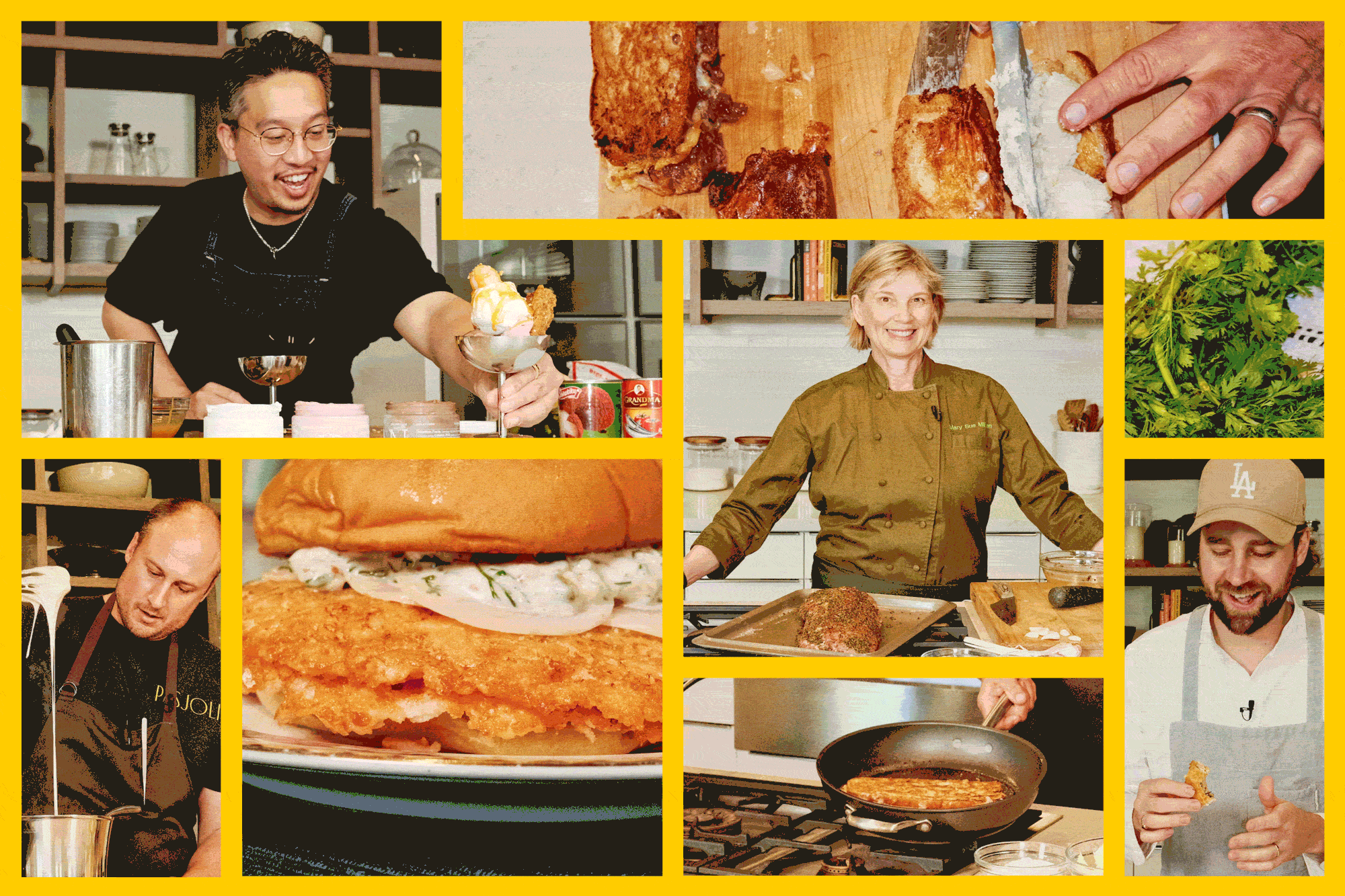The Wyman Test
The Times’ Food section has relied on various recipe testers over the years. Without much fanfare, these men and women have spent hundreds of hours preparing dishes that, combined, could probably feed several armies.
Yet it’s the quality of their work that we remember, rather than the quantity. Through numerous tests and retests, they’ve made certain that each recipe’s fine points could be achieved by the home cook.
Take A.L. Wyman, who regularly tested Times recipes in his Glendale “laboratory kitchen” in the early 1920s. He had trained as a chef and master baker in Europe, Egypt and Asia. And he developed an interest in California’s fruit associations, writing recipes for them that incorporated peaches, figs, raisins, walnuts, oranges and other local produce.
Mostly, Wyman enjoyed cooking as it applied to the family and the home. His “Practical Recipes” column, which was published in The Times each Saturday, provided clear, concise directions for everything from avocado cocktails to banana cream pies.
In 1923, The Times sponsored a recipe contest, with first, second and third prizes awarded for the best appetizer, soup, seafood, meat, vegetable, salad, dessert and “Spanish” (Mexican) recipes. Wyman tested more than 7,000 entries (and we assume had a hand in the judging) before compiling the winners and losers into what became the “Los Angeles Times Prize Cook Book.”
The 340-page volume followed four earlier Times cookbooks that showcased readers’ recipes. This one, though, was marketed as a “real ‘prize’ to housekeepers” and a “delight to Eastern families who receive it as a gift from California friends.”
The dessert category (no surprise) received the most entries--long-held family secrets for sponge cakes, tortes, puddings and pies. First prize went to Kate M. Brill of Los Angeles for her Coconut Layer Cake. It beat a strawberry pie, a date souffle and a caramel custard, among others. Why? Perhaps because it is superb--in looks and taste. The coconut gives it texture, the custard filling gives it a sweet, gooey flavor.
Coconut Layer Cake
Active Work Time: 30 minutes * Total Preparation Time: 1 hour 30 minutes
We’ve made two “modern” additions to Mrs. Brill’s recipe: using parchment paper and nonstick cooking spray for the pans.
1/2 cup (1 stick) butter
1 cup sugar
2 eggs
1 1/2 cups pastry flour
1 teaspoon cream of tartar
1/2 teaspoon baking soda
1/4 cup milk
1/4 cup coconut milk
Nonstick cooking spray
* Cream butter and sugar. Add eggs and mix thoroughly.
* Sift together flour, cream of tartar and baking soda. Add to butter mixture. Mix well. Add milk and coconut milk.
* Line bottoms of 2 (8-inch) round cake pans with parchment paper and coat with nonstick cooking spray. Divide batter between pans. Bake cakes at 350 degrees until toothpick inserted in center comes out clean, 20 minutes. Cool in pans on rack, then remove.
CUSTARD FILLING
1 tablespoon cornstarch
1/2 cup coconut milk
1/2 cup milk
3 tablespoons sugar
1 egg yolk, beaten
1/2 cup shredded coconut
* Combine cornstarch with coconut milk and milk in small saucepan. Add sugar, egg yolk and coconut, and cook over low heat, stirring constantly, until thick, 5 minutes. Cool, about 1 hour. Spread between cake layers.
FROSTING
1 cup sugar
1/2 cup water
2 egg whites, stiffly beaten
1/2 cup shredded coconut
* Boil sugar and water in saucepan without stirring until it threads from spoon or reaches 230 degrees on a candy thermometer. Beat slowly into beaten egg whites, then increase mixer speed to medium and beat until frosting-like in consistency, 2 to 3 minutes.
* Spread on top and sides of cake. (Frosting must be used immediately or it will dry out.) Sprinkle coconut over top of frosting, pressing down lightly.
12 servings. Each serving: 355 calories; 145 mg sodium; 80 mg cholesterol; 15 grams fat; 53 grams carbohydrates; 4 grams protein; 0.50 gram fiber.
More to Read
Eat your way across L.A.
Get our weekly Tasting Notes newsletter for reviews, news and more.
You may occasionally receive promotional content from the Los Angeles Times.










